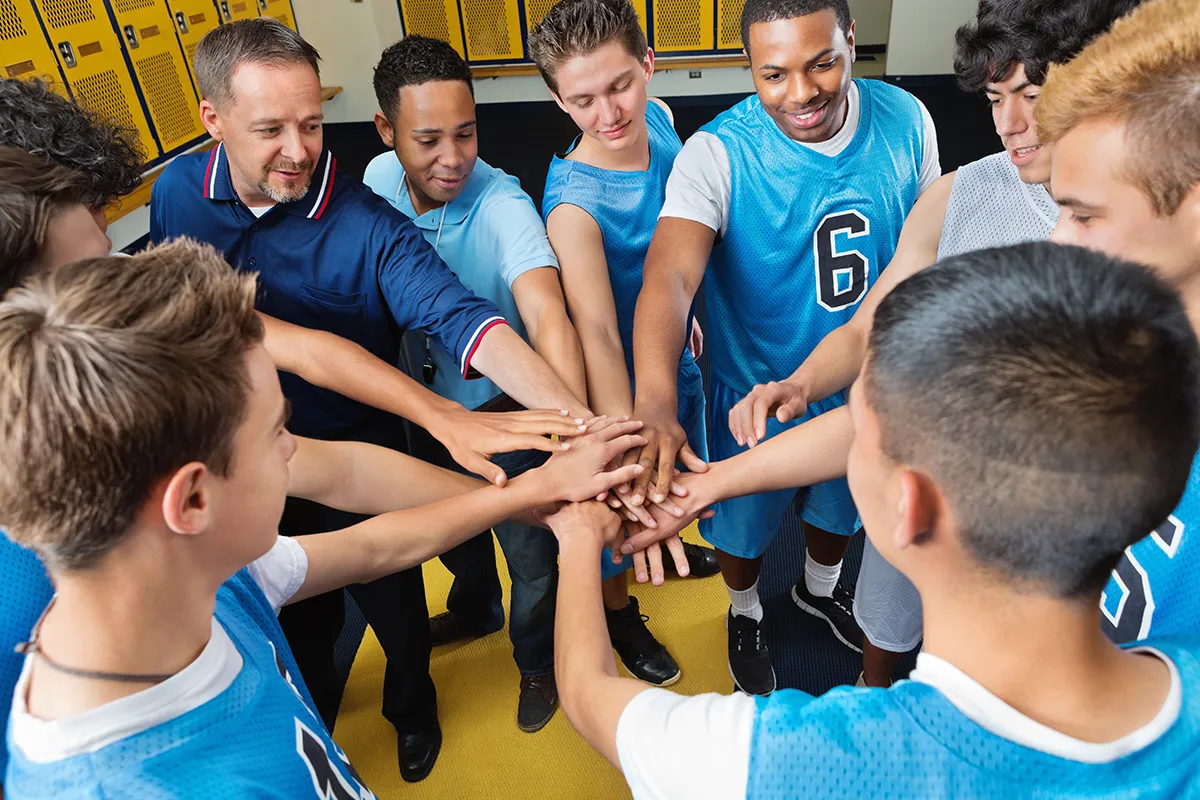A Great Goal: Three Ways Sports May Help At-Risk Youth

It’s tough being a teenager in today’s world.
For some though, tough life experiences at home or school can impact their ability to cope with the regular day-to-day challenges of growing up.
What’s the answer? Well, sometimes it’s a little competition – and the camaraderie that comes with it. Participating in team sports can help kids in a number of ways.
Providing a mentor
“What’s up, coach?” Being around someone older – either a coach or an older teammate – who is strong, smart, and supportive shows younger kids that it’s possible to rise above their current situation.
“Kids have to make difficult decisions every day,” says Dr. Lee Kaplan, a sports medicine expert and director of the University of Miami Sports Medicine Institute. “Seeing examples from older individuals of the positive things that happen if you make the right choices in life puts things in perspective.”
Dr. Kaplan says he is particularly passionate about this topic, which is one of the reasons why he founded a leadership seminar for student-athletes in the South Florida area.
The U.S. Department of Health and Human Services also found that “mentoring and support for the development of skills and interests,” and “positive norms” in school are protective factors against risky behaviors.
Fostering relationships through teamwork
Learning how to work with others towards a common goal has many rewards. Kids learn how their behavior can affect the team as a whole. It also promotes interaction with other kids their age, says UHealth child and adolescent psychiatry expert Dr. Nicole Mavrides. “At-risk youth who feel socially isolated from their peers have a higher rate of violent behavior and depressive thoughts.”
“Coaches, in particular, are in a unique position to see the first signs of a potential mental health or substance abuse issue because they see the youth regularly over a long period of time,” Dr. Kaplan explains. “For instance, they may notice if an athlete is less engaged, if they have lost a lot of weight or have a marked decrease in energy, or if they are acting more aggressive or agitated.”
The mind-body connection
There are many studies that link physical activity to positive mental health effects. Improved sleep, improvement in mood, and increased mental alertness are just a few of the benefits, according to a paper published in the Primary Care Companion to the Journal of Clinical Psychiatry.
Also, the American Psychological Association says that exercise may improve the brain’s ability to cope with mental stress through the production of norepinephrine.
Dr. Kaplan agrees that sports and physical activity can lead to a “runner’s high.” “When you exercise your body also produces endorphins, dopamine, and serotonin,” he says. “All of these brain chemicals help combat depressive moods and promote a sense of mental well-being in youth and adults.” He adds that exercising outside with fresh air and sunlight can be even more beneficial than playing sports inside.
While participating in a sport is not a magic formula for turning around the life of a troubled youth, it certainly provides many benefits that can help teens who are struggling in school or facing problems at home feel more connected to their peers. The lessons learned through teamwork and sportsmanship are ones that kids can take into their adult life such as how to communicate with others, learning how to take a loss and how to work as a team.
UM Sports Medicine Institute
The institute provides professional, personalized care at three convenient locations with the goal of helping you “recover your game.”
For more information, call 855-906-3816 or visit uhealthsports.com.
Tags: adolescent mental health, behavioral health, depression, Dr. Lee Kaplan, Dr. Nicole Mavrides, team sports, UHealth Sports Medicine Institute
